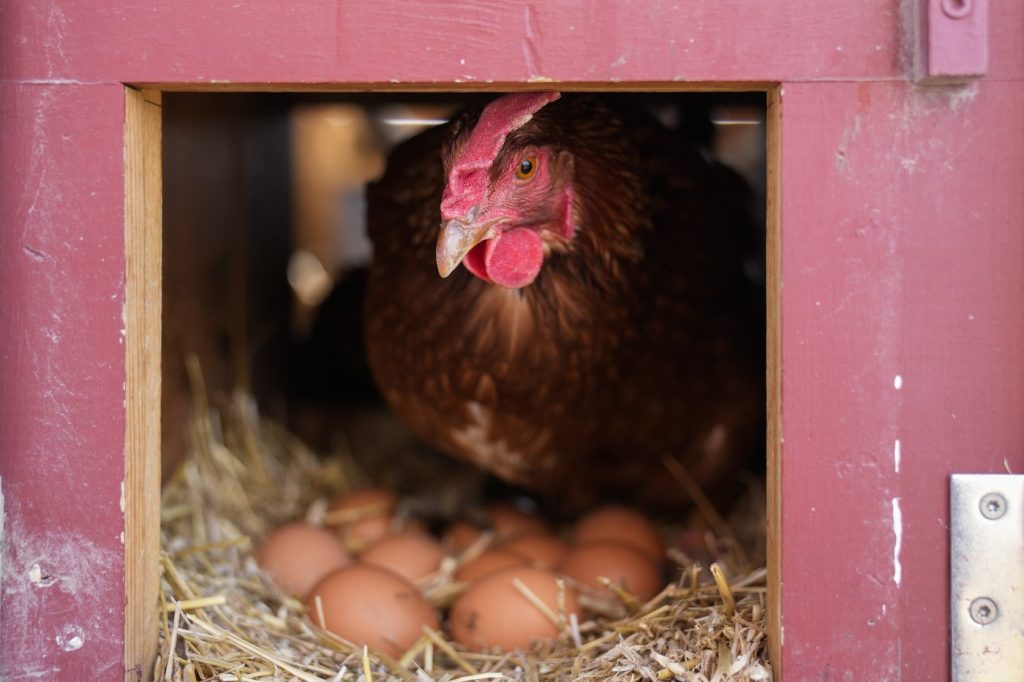OMAHA, Neb. (AP) — Vaccines are being considered as a crucial method for controlling bird flu and preventing the culling of millions of chickens, which has significantly contributed to soaring egg prices, now averaging nearly $6 per dozen. However, the deployment of vaccines has faced delays, primarily due to concerns over the potential negative impact on chicken exports valued at billions of dollars annually.
The U.S. Department of Agriculture (USDA) plans to allocate $100 million for the research of bird flu vaccines in collaboration with the meat chicken, egg, and turkey industries. This initiative is part of a larger $1 billion investment aimed at bolstering protections against the avian flu virus, with President Donald Trump advocating for these measures as a way to alleviate high egg prices.
Chicken meat producers exhibit significant resistance towards vaccines, largely due to fears that it might compromise meat exports, which amounted to nearly $4.7 billion in the previous year. In contrast, egg and turkey producers are more reliant on domestic sales and have been disproportionately affected by the outbreaks of the virus.
The necessity of a vaccine arises from the current government policy that mandates the slaughter of any flock infected with bird flu to prevent the disease's spread. Since 2022, over 166 million birds have been culled across the U.S., primarily affecting egg-laying hens, which is the main factor behind the rising egg prices. Currently, the average price for a dozen eggs has reached $5.90, with even higher prices reported in various regions.
Veterinarian Simon Shane, who operates www.Egg-News.com, mentioned that the government's hesitance to adopt vaccines stems from the opposition of the meat chicken industry. Shane claimed that the ongoing crisis, marked by egg prices soaring to $8 or $9 per dozen, had forced the issue into the political limelight, further complicating the situation.
One of the primary challenges in implementing vaccination is the need for the government to establish an effective monitoring system to detect outbreaks within vaccinated flocks, which might not exhibit symptoms. Former USDA chief veterinary officer John Clifford, now associated with a poultry export group, emphasized the importance of negotiating with trade partners to mitigate potential trade issues arising from vaccination.
Concerns also persist about the possibility of the virus remaining unnoticed within vaccinated populations, posing risks of mutation and making it a more significant threat to humans. Even though cooking chicken properly can eliminate the virus, the industry and consumers prefer to avoid the presence of the virus entirely.
For broiler chickens, the impact of the virus is less severe, given that these birds are typically slaughtered at 6 to 8 weeks old, in contrast to egg-laying hens, which live for over two years and are more susceptible to infection. Most broilers are raised in the Southeast U.S., which has seen fewer outbreaks compared to the Midwest and West.
Distribution issues also contribute to delays in vaccination efforts. Egg producers advocate for administering vaccines through feed or water rather than via injections, which would be impractical for millions of birds in a single barn. Furthermore, distinguishing between vaccinated birds and those infected with the virus poses additional challenges, which could provoke hesitance in other countries regarding importing U.S. poultry meat.
International experience with vaccinations provides insight into potential strategies. China and Mexico have long employed vaccination programs, albeit with differing approaches. Mexico continues vaccinating but does not cull infected flocks, which perpetuates the virus's presence. Conversely, China still conducts culling among vaccinated flocks when infections occur, an approach that has demonstrated effectiveness in controlling the spread of the virus.
Experts suggest the U.S. might need to persist with its culling strategy, even while administering vaccines, and that vaccines could be prioritized for egg layers and turkeys rather than broilers. However, significant relief in egg prices may not be on the horizon. The USDA has predicted that average egg prices could still be about 41% higher than the projected 2024 average of $3.17 per dozen, totaling approximately $4.47 per dozen, only slightly below current pricing.










